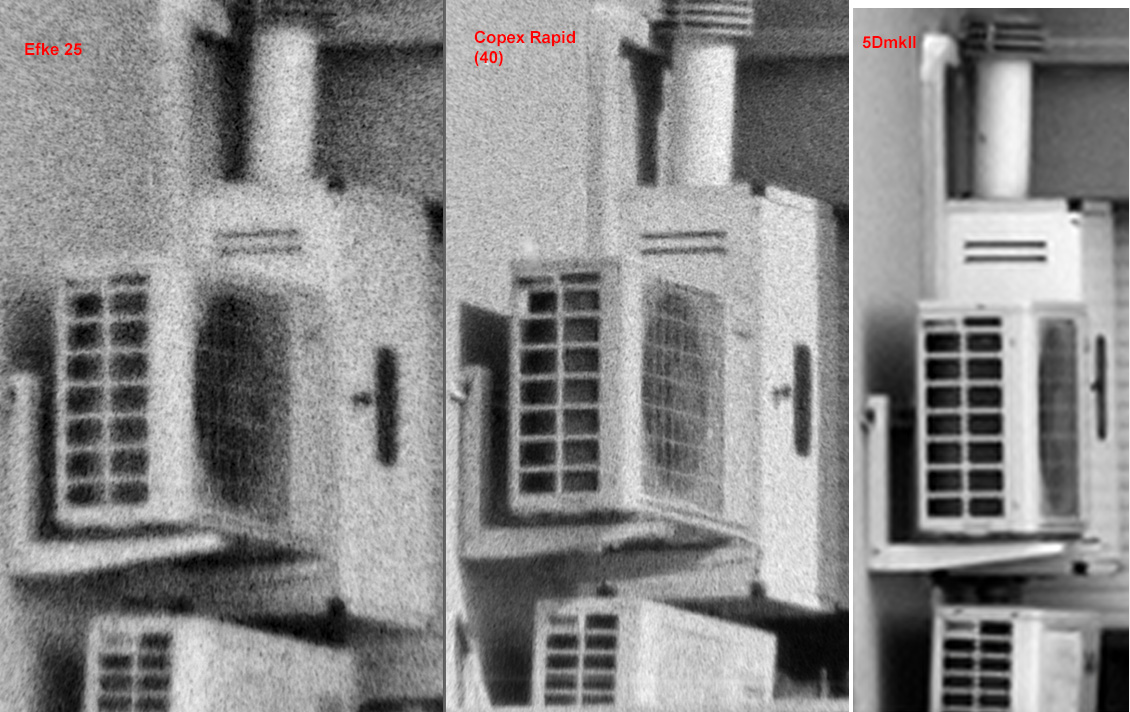Fernando2
Well-known
Just a very quick&dirty comparison, nothing scientific.
Time ago I shot a building with my Canon Elan 7 equipped with EF 50/1.4 USM, loaded with Agfa Copex Rapid (rated at 40).
I developed the Copex in Caffenol LC+C (SPUR Modular UR New costs too much per roll, for my taste).
After some time I reshot the same building (from a slightly different point of view) with my Canon 5DmkII, same lens as before.
Then a few days ago I shot it again, this time with Efke 25 (rated at 20 and developed in XTOL stock).
Here's the building, whole frame; note the red rectangle.

Now the crops from the red rectangle.
The two film crops were taken with a microscope.
The 5DmkII crop was upsampled to match the size of the film crops (I know, I know, but there's no "right" way for this kind of comparison).

I'm sure the Copex Rapid would fare even better with its specific developer (SPUR Modular UR New), but it costs too much more than the Caffenol (0.25 eur per roll), so that's it. 😀
Can't wait to pit some 120 gear armed with Copex Rapid against the poor little 5DmkII. 😉
Fernando
Time ago I shot a building with my Canon Elan 7 equipped with EF 50/1.4 USM, loaded with Agfa Copex Rapid (rated at 40).
I developed the Copex in Caffenol LC+C (SPUR Modular UR New costs too much per roll, for my taste).
After some time I reshot the same building (from a slightly different point of view) with my Canon 5DmkII, same lens as before.
Then a few days ago I shot it again, this time with Efke 25 (rated at 20 and developed in XTOL stock).
Here's the building, whole frame; note the red rectangle.

Now the crops from the red rectangle.
The two film crops were taken with a microscope.
The 5DmkII crop was upsampled to match the size of the film crops (I know, I know, but there's no "right" way for this kind of comparison).

I'm sure the Copex Rapid would fare even better with its specific developer (SPUR Modular UR New), but it costs too much more than the Caffenol (0.25 eur per roll), so that's it. 😀
Can't wait to pit some 120 gear armed with Copex Rapid against the poor little 5DmkII. 😉
Fernando
Last edited:



